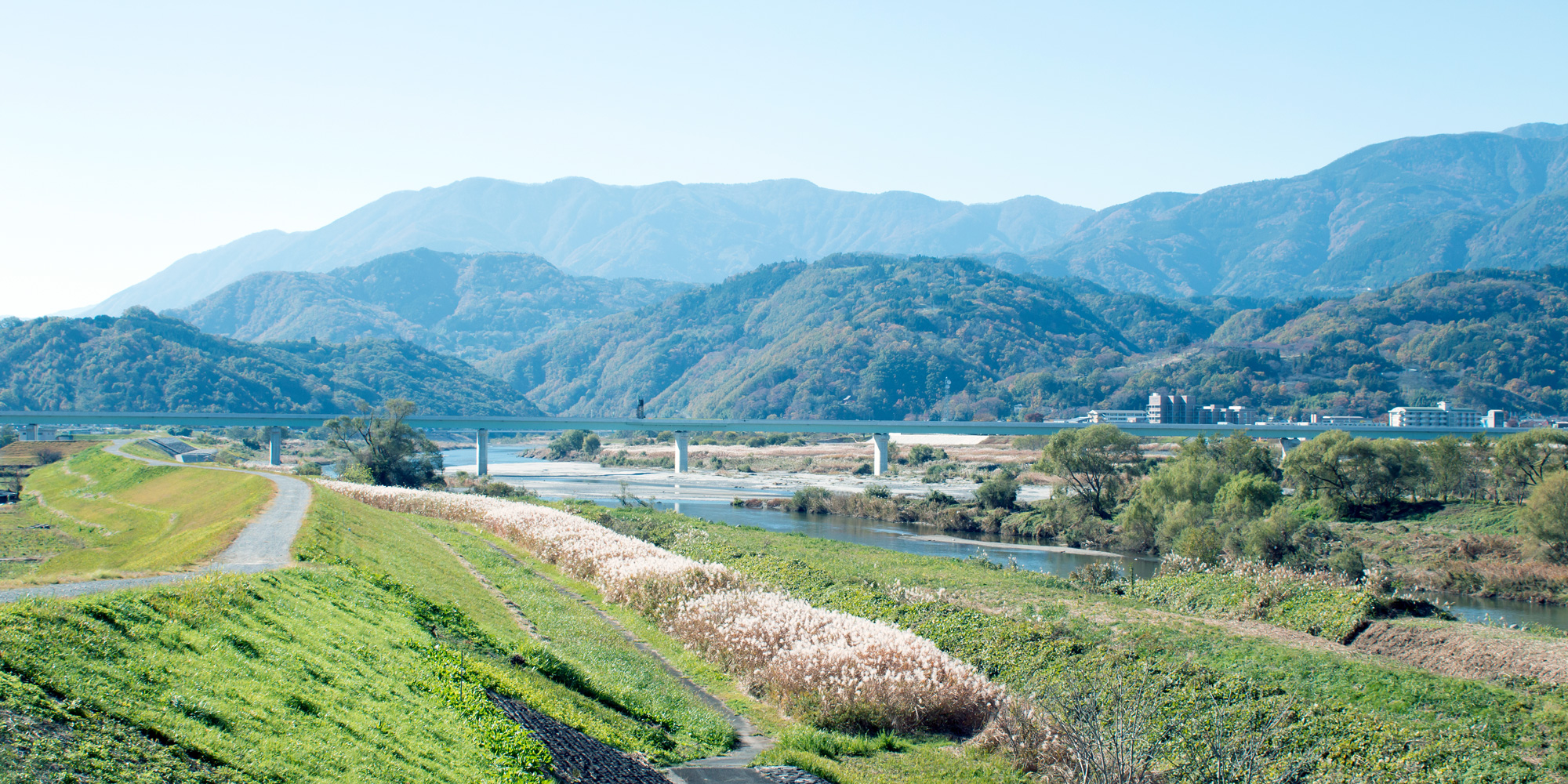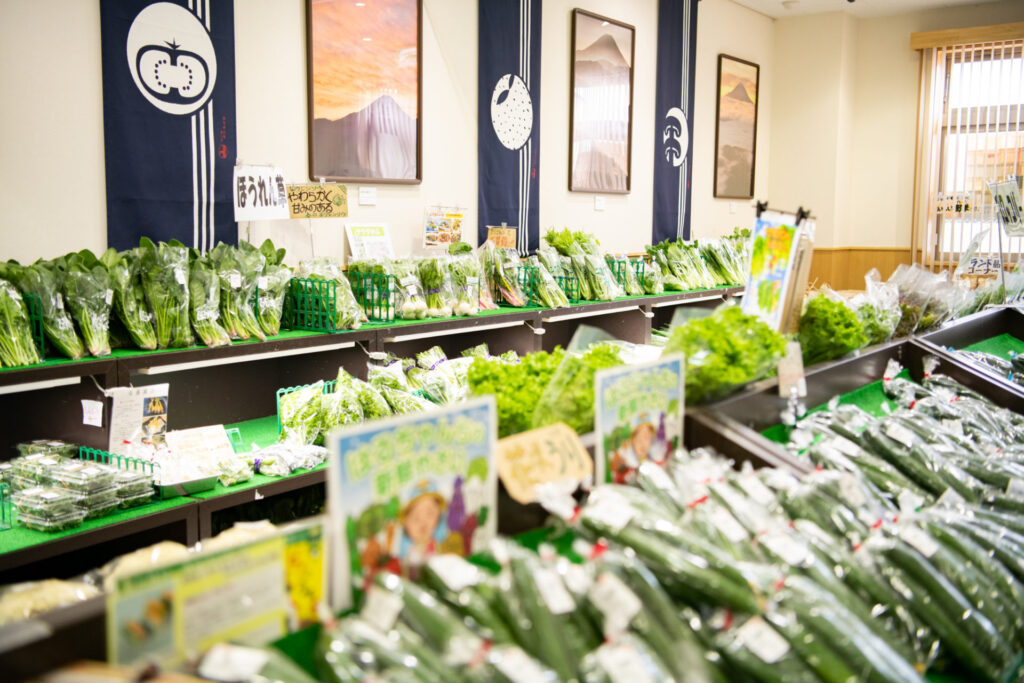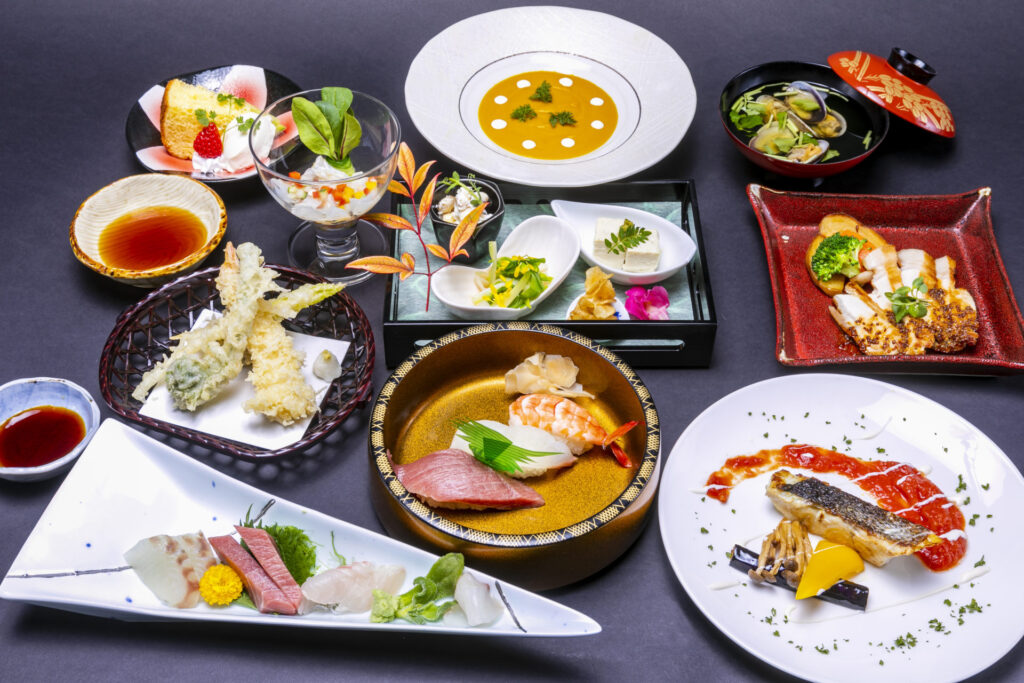Explore the West side of the River Fujikawa
About Nishijima and Fujikawa
Recommendations!
- Fujikawa Town’s shopping district is a shopping district of humanity
- The sacred place of rakugo (Japanese comic storytelling) “Kaburazawa”!
- Inkstone and Japanese paper. The tools that are not used for writing come from this place.
What should we call the river that runs through Minami Yamanashi? “Kawa” means “river”. So, Fujikawa literally means River Fuji. But imagining the situation where you mention this river to Japanese people, very few would understand it if you called it River Fuji. Even fluent English speakers would not recognize it instantly. For that reason, we call it here River Fujikawa!
River Fujikawa flows from the mountain range called Japanese Southern Alps into Suruga Bay in Shizuoka Prefecture. It is one of the fastest flowing rivers in Japan, which does not seem today. It used to be known for its active shipping of tribute rice, salt, and marine products. Also, many pilgrims who visited Mt. Minobu (the head temple of Nichiren Buddhism).
One of the “must” visit is Michinoeki Fujikawa. Michinoeki literally means “a station on the road”. It is like a big market (not a supermarket) with a large parking lot.
Diamond Fuji
From around December 16 toward the year end, at around 7:20 in the morning, your will be able to see a magnificent view called Diamond Fuji from Hozumi area in Fujikawa-cho. The phenomenon known as Diamond Fuji occurs when the summit of Mt. Fuji aligns with the sun, creating a beautiful and brilliant diamond-like appearance. On the winter solstice (December 22nd) the sun rises from exactly the middle of the summit of Mt. Fuji!


Nishijima Area – Washi Paper Producing Area
If you have ever visited the British Museum, you must have seen Papyrus of Funefer (B.C.1275). It is also called Book of the Dead, which is the book written on papyrus as the name refers. “Paper” in English, “papier” in French and German, and “papel” in Spanish…These are all derived from this Ancient Egypt’s papyrus. However, papyrus cannot be defined as “paper”. Papyrus is a lamination of natural plant fibers, while paper is agglutinated plant fibers.
In Japan, the method of paper (not papyrus) production was introduced from Ancient China. It was started in the beginning of the 7th century according to The Chronicles of Japan. Japanese paper, or washi, is characterized by its subtly irregular texture achieved from long fibers used, which are longer than those used for European paper. It is also stronger and more absorbent.
Nishijima, a small district on the west side of the River Fujikawa, is known as the traditional paper producing area where seven factories are still in operation using the traditional method. Under the general trend of mass production, as you know, traditional small factories are in danger. Sadly, the traditional paper production in Nishijima is not an exception to this trend, which is a shame as its history dates back to the 16th century. Most of the residents were engaged in paper making during its golden age. Many sheets of paper still wet were hung on every path of the town to be sun-dried, which is now rarely seen.
We recommend you to make a visit at a factory to see how the Japanese paper is made by hand. What attracts your eyes will be the process of making sheets of paper, or tesuki. You will see a skilled artisan who shakes a mat back and forth in rather milky water.
The raw material of paper is mainly the bark of Mitsumata paper bush. The bark is boiled, steamed and beaten until its fibers get softened and loosened. These fibers and the plant-derived starchy substance are put in water. This paper solution is that milky water the artisan works with. The mat-like thing that he shakes is a bamboo screen with the frame. The narrow gaps between bamboos catch the fibers. He scoops the paper solution with this mat and shakes it to spread the fibers evenly over the bamboo screen. The more he shakes, the thicker the paper becomes. The excess water is drained off and a ‘raw’ sheet of paper is removed and piled up to be pressed overnight.
Another star player in the factory is a lady who is engaged in drying. She peels off a sheet by hand from the pile and moves it onto a hot iron plate using a brush. A damp sheet of paper is dried here to become a proper washi paper. These processes seem very easy but you will know how difficult they are if you try them for yourself.
It would be also a good occasion to do some calligraphy on the paper you dried. Dip the writing brush in the ink to take enough ink. Place the tip of the brush and move it slowly to feel the paper is absorbing the ink. You may know washi paper absorbs the ink more quickly than you’ve imagined, which must be a surprise for you. Dip again the brush to take more ink and write your name. You can also try to write some easy Japanese letters.










